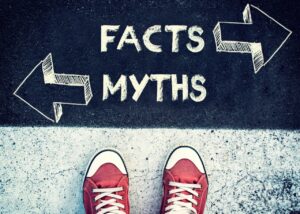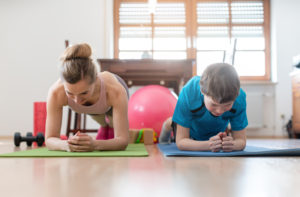By Iris Farrou
05 Aug, 2022
Geriatric Mental Health, Lifestyle Tips, Mental Health, Prevention, Uncategorized, Women's Health
aging parents, Depression, Depression symptoms, Elderly, Geriatric, isolation, Loneliness, Mental Health, Socialization

Our physical and mental health is directly connected to regular, healthy, and enjoyable
socialization with friends and family, colleagues, people who share our hobbies and interests…
With COVID-19 severely affecting our socialization levels, many found themselves with
increased loneliness, anxiety, and depression—thus bringing down their immune system and
overall physical health. However, it is a harsh truth that elders suffered from isolating and social
distancing extremely more than younger people.
Unfortunately, elder isolation and loneliness is not solely a COVID-related phenomenon. A
study by UCSF found that more than 40% of seniors regularly experience loneliness. The same
study also drew direct connections between loneliness, serious health issues, and death among
the elderly population. One can only imagine how much worse this got during COVID isolation.
Health Issues
Individuals with low social interaction levels are more likely to suffer from anxiety and
depression, and experts have found direct links between loneliness and suicide. Senior
individuals with limited social lives have also been found to suffer from worsened dementia and
Alzheimer’s disease—or rapid progression compared to elders with a rich social life—coronary
artery disease, heart failure, and increased risk of stroke.
Benefits of Socialization
The good news is that socializing helps combat most, if not all, of the health issues loneliness
creates. A social life can benefit elders because it:
- Increases mental awareness: when we interact with others, we remain connected to the
outside world and keep our cognitive abilities sharpened. After all, the brain is a muscle.
- Fights anxiety and depression: though these may be chronic conditions, socializing helps
keep anxiety and depression at bay—especially if both are related to ageing. At the very
least, it proves that others care and helps build a community.
- Support system: elder socialization reminds us there is a community of same-aged
people, as well as friends and family, who are present for emotional and physical help.
- Physical discomfort relief: though physical pain can be very sharp, socialization provides
a break from a lonely routine, gets us going, and takes our mind off of aches—even for a
little while.
Overall, elder socialization not only creates a healthier quality of life and has the potential to
extend life. With technology seniors can be closer to their loved ones much more easily: daily
use of social media, adopting a pet for companionship, utilizing companion services, trying to
enjoy meals socially, participating in local activities (if possible) and ensuring reliable
transportation are just some of the ways that eliminate elder social isolation.
More
By Iris Farrou
05 Aug, 2022
Health Conditions and Pregnancy, Lifestyle Tips, Pregnancy, Prevention, Reproductive health, Uncategorized
Autoimmune, Common pregnancy complications, Disease Modifying Therapy, DMTs, Healthy Pregnancy with MS, MS, Multiple Sclerosis, Pregnancy
What is it?
Multiple Sclerosis (MS) is an autoimmune disease that affects the central nervous system, mainly
the brain and the spinal cord. Like most autoimmune conditions, research remains inconclusive
on what causes it, other than: antibodies attack healthy tissue. In MS, your body attacks the
myelin sheath: the wiring protecting your nerve cells. This damage causes messages from your
brain to the rest of your body to slow down, or completely stop. Most common treatment for MS
is a Disease Modifying Therapy (DMT), tailored to the patient’s needs and the severity of the
condition.

DMTs and Pregnancy
Women who have been diagnosed with MS and are thinking of becoming pregnant have likely
been told that most DMTs are not safe to use during pregnancy. One of the most common
concerns with stopping DMTs is the risk of relapse after pregnancy. In fact, medical
professionals suggest you stop the therapy altogether once you embark on your pregnancy
journey.
Another research, however, has found that 12% of its women participants were taking a
DMT during the first trimester. This lowered to 3% of participants by the third trimester. This is
not to say that use of DMTs during pregnancy is safe, but it does point to the need for further
research.
What should I expect?
It’s common that during pregnancy most autoimmune diseases—including MS—quiet down:
you may not experience as many symptoms, or your symptoms may lessen. Researchers believe
this is due to the hormones your body produces during pregnancy.
There is no evidence MS causes any miscarriages, stillbirths, or congenital malfunctions. Some
research suggests that premature labor and the risk of infections have been found to be slightly
higher in women with MS. Your doctor may suggest closer monitoring of your pregnancy, more
prenatal visits, and further tests to ensure your health. It’s possible you may need to consider a
C-section, especially if your MS symptoms affect your pelvic muscles and nerves.
What about relapse?
Research has found that the risk of relapse is relatively low during pregnancy. However, it can be
treated with corticosteroids which are generally known to be safe during the first and second
trimester.
After giving birth, studies have found an increased chance of relapse in the first three months. A
significant factor is the stability of the disease prior to pregnancy, and it is used to reduce this
risk. Similar to use of corticosteroids, if you are thinking of breastfeeding, remember that DMTs
can also pass through breastmilk—their use is not recommended if you will be breastfeeding.
More
 Living in a world that is becoming increasingly busy and fast-paced necessitates that we remain active, or even hyperactive, for long amounts of time. Just because that has become the standard, however, does not mean we should accept exhaustion and low energy levels—especially if we feel this way the majority of the time—as the standard. It is understandable that women may face even more responsibilities in their daily lives, trying to balance their work life and families, personal life, and friendships, as well as the duties of motherhood. But constant exhaustion experienced by someone who is generally healthy, and lives a generally healthy lifestyle, is a cause for concern.
Living in a world that is becoming increasingly busy and fast-paced necessitates that we remain active, or even hyperactive, for long amounts of time. Just because that has become the standard, however, does not mean we should accept exhaustion and low energy levels—especially if we feel this way the majority of the time—as the standard. It is understandable that women may face even more responsibilities in their daily lives, trying to balance their work life and families, personal life, and friendships, as well as the duties of motherhood. But constant exhaustion experienced by someone who is generally healthy, and lives a generally healthy lifestyle, is a cause for concern.
Here are some of the possible factors that may be contributing to constant fatigue and low energy:
Poor Quality Sleep: even if our busy lifestyle keeps us on our toes, adults actually need seven to eight hours of sleep a night, but that is rarely the case. However, establishing a sleep schedule that revolves around going to bed at the same time and waking up at the same time every day can be very beneficial to prevent exhaustion. It is important to sleep in a cool, dark, place with limited distractions and preferably no electronics.
Sleep Apnea: pretty close to the poor quality of sleep many adults experience is the phenomenon of sleep apnea. This is a condition that can make quality sleep almost impossible, characterized by snoring and interrupted breathing. Even if you end up sleeping through the night, it’s likely you’ll still be drowsy during the daytime, which leads to exhaustion.
Thyroid Problems: they most commonly affect women, especially middle-aged women. In addition to affecting your heart rate and metabolism, a hyperactive thyroid can cause you to feel burnt out. On the other hand, an underperforming thyroid can make you feel sluggish. If you are suspecting this is the cause of your exhaustion, discuss thyroid replacement hormone options with your doctor.
Iron Deficiency: this is a pretty common condition among women, as menstruation, pregnancy, and menopause cause female bodies to need more iron. Actually, few women get the amount of iron they actually need many times leading to anemia. Anemia’s most common symptoms are fatigue and weakness.
Before you venture into medical explorations, it is also advised that you consider lifestyle factors that may be affecting your energy levels. For example, excess physical activity can cause you to feel exhausted, and a sedentary lifestyle may cause you to feel weak and fatigued. Alcohol or drug use, as well as medications like antihistamines or cough syrup, can also lead to feeling tired. Unhealthy eating habits or an unbalanced diet are likely to contribute to general exhaustion.
More
 Summer is here and so is the need for sunscreens and skin protection! To safely enjoy your time at the pool, shore, or park, remember there are two types of UV light that can harm your skin: UVA and UVB. Too much exposure can cause skin cancer. UVA light prematurely ages your skin, causing wrinkles and spots, while UVB light leads to sunburns. Though you should avoid the sun during the peak hours of 10 a.m. to 4 p.m., you should also choose a broad-spectrum sunscreen that protects you from UV light.
Summer is here and so is the need for sunscreens and skin protection! To safely enjoy your time at the pool, shore, or park, remember there are two types of UV light that can harm your skin: UVA and UVB. Too much exposure can cause skin cancer. UVA light prematurely ages your skin, causing wrinkles and spots, while UVB light leads to sunburns. Though you should avoid the sun during the peak hours of 10 a.m. to 4 p.m., you should also choose a broad-spectrum sunscreen that protects you from UV light.
What about SPF?
Often, we may think that the higher the SPF, the closer to sun safety. However, high-number SPFs offer the same protection as low-number SPFs. You should use a sunscreen of at least 30 SPF, and keep in mind SPFs greater than 50 provide only a small increase in UV protection.
Effectiveness
Though it would be ideal, putting on moisturizer with sunblock in the morning does not last the whole day. It can be washed off when swimming, or even sweating, and we tend to not apply a thick enough layer in the first place. Water-resistant sunscreens are not a solution either: they last about 40 minutes in water. High water-resistant products last up to 80 minutes.
Types of Skin
The biggest question is whether we should use sun lotion/cream or a spray. Here are some basic differences you may want to consider:
- Lotions and creams: if you have dry skin, go for a cream sunscreen, especially on the face. Around your eyes, you can use a stick and for large areas, use a lotion.
- Gel and sprays: gels are very useful in hairy areas, and sprays offer an easy way to put sunscreen on your children. Be generous when spraying so that you end up with a thick coating, but don’t spray around the eyes and nose.
Aging
If you want the use of sunscreen to be effective in preventing aging, wrinkles, and sunspots, get in the habit of using it every day. This means, it’s not only for special occasions or only during the summer. Those who use broad-spectrum sunscreen daily show 24% less signs of aging than those who use it intermittently. In addition to the sunscreen, wear protective clothing that covers the arms and chest. Use hats and sunglasses to protect your head and eyes and find shade whenever possible.
Acne
One of the most common resistances to sunscreen is that it causes oily or acne-prone skin to break out even more, as it clogs the pores and is, simply, very thick. However, do not let that keep you from protecting your skin from UV rays: there are lightweight, oil-free, and non-comedogenic sunscreens available. Some of them even include lactic acid, perlite, silica control shine and antioxidants to work with oily skin and prevent breakouts while protecting you.
More
By Iris Farrou
08 Apr, 2021
Lifestyle Tips, Mental Health
Best gyns in Buffalo, Best OB practices in Buffalo, Best OBGYN Groups in Buffalo, birth control, Buffalo OB-GYN, Buffalo OBGYN, Chouchani MD, mental health tips, WNY OB-GYN, WNY Ob-gyn doctors, WNY OBGYN, women's health
The conversation around the side effects of hormonal birth control and contraceptive pills on mental health has been around for a while: you may have heard women recounting their negative experiences with heightened depression symptoms, or mood swings, when switching contraceptive methods. Though personal experiences are not medical research, they do warrant attention.
In 2016 a Danish study of more than 1 million women, which focused on analyzing nationwide health records, showed that women using hormonal birth control were more likely to be treated for depression. On the other side, studies conducted in the US and Finland have showed that hormonal birth control users report less symptoms of anxiety and depression. Though just what effect hormonal birth control can have on mental health differs, one thing is for sure: it does affect it.
Hormones and Mental Health
Though there are no mental health risks directly associated with the use of contraception, we do know hormones—and hormone imbalances—can have an impact on mental health. To start with, women are twice as likely as men to suffer from depression: this is a difference that starts in adolescence due to the changing levels of estrogen.
During the follicular phase, which is the time between the start of a period and ovulation, estrogen levels are high. However, individuals with depression demonstrate lower levels of estrogen at that time. Hormonal birth control is likely to affect the natural levels of hormones in someone’s body, and therefore cause mental health changes.
Types of Hormonal Contraception and their Effects
Implant
There are two types of implants: one containing the progestin etonogestrel and another containing the progestin levonorgestrel. Results of the Danish study concluded that use of the etonogestrel implant led to higher use of antidepressants, especially for teens. People using that for two years have also reported mood swings and depression attributed to the implant. The risk for depression seems to heighten with the etonogestrel implant, but studies remain somewhat inconclusive.
Hormonal IUD
The Danish study on hormonal IUD showed that adolescent IUD users were more likely to be treated for depression than adult IUD users. However, a Finnish study suggested that women using this method were just as likely to showcase symptoms of anxiety and depression as women who were not using it. Like the implant, there is some evidence that IUD increases chances of depression but no direct conclusion.
Pills
Combined Oral Contraceptives (COCc) contain both synthetic estrogen and progestin. Though the Danish study found that users of COCs aged 16-31 were more likely to be prescribed an antidepressant, several other studies have shown that birth control users are not more likely to have symptoms of depression. However, people using COCs for reasons other than birth control have been found more likely to have depression.
There are several other hormonal contraceptive methods that can potentially affect mental health, but the three examined above are the most commonly used. Results may remain inconclusive, but if you are taking a hormonal contraceptive method and you experience unusual symptoms, you may consider consulting your doctor or healthcare provider.
More
By Iris Farrou
26 Feb, 2021
Lifestyle Tips, Sexual health
Best gyns in Buffalo, Best OB practices in Buffalo, Best OBGYN Groups in Buffalo, Buffalo OB-GYN, Buffalo OBGYN, Chouchani MD, WNY OB-GYN, WNY Ob-gyn doctors, WNY OBGYN, women's health

According to the CDC, human papillomavirus (HPV) is the most common sexually transmitted infection (STI), while other sources report that about 14 million people become infected every year. Both men and women can contract HPV. It is estimated that though 80% of sexually active individuals are likely to have it during their life, not all of them know they have the virus. Some types of the virus can cause warts or cancer, while other types go away on their own. However, contracting the disease once does not exclude one from getting it again.
Causes and Transmission
HPV can be transmitted relatively easy when skin on skin contact with someone who has it occurs. Most commonly, this occurs with sexual contact and during vaginal or anal sex. It may also be transmitted during childbirth, from the mother to her baby. In many instances, HPV causes no symptoms, which can make it rather hard to even suspect its presence. Additionally, if you have contracted the virus it can take years to show any symptoms so identifying when you first became infected becomes a challenge. The most common symptom is warts, which are usually bumps in the genital area—either flat or raised. In other cases, when the virus does not go away it can cause different types of cancer.
It is recommended that you not only get tested regularly for STIs, and keep up with Pap smears, but that you also specifically request an HPV test. Regular Pap smear results do not exclude the possibility of HPV; in ages over 30, you may also want to consider screening for cervical cancer.
HPV and Cancer
Like with other symptoms of HPV, it can take many years after it is contracted to form into a type of cancer. Usually, the virus causes cervical cancer but it can also cause cancer of the vulva, penis, or anus. It may also cause oropharyngeal cancer, which is located at the back of the throat, base of the tongue and tonsils.
Though there is no cure for HPV itself, there are treatments for warts and for different types of cancer. The most usual treatments for women include colposcopy, where the cervix is closely examined for pre-cancerous cells, cryotherapy which freezes and removes pre-cancerous cells from the cervix, and Loop Electrosurgical Excision Procedure (LEEP) the removes the pre-cancerous cells using an electrical current.
HPV Prevention and Vaccine
Similar to the prevention of any STI, limited sexual contact, safe sexual practices, and regular health checks are good measures to stay safe. The HPV vaccine, however, increases chances of preventing warts and cervical cancer caused. Though the HPV vaccine recommended age is 11 to 12 years old and before the existence of sexual contact, it is still possible to get the vaccine even if you are sexually active already. Remember that the HPV vaccine does not protect against all types of cervical cancer and in most cases it is given in three separate shots.
More

There is no doubt, this year’s holiday season will be somewhat different. Many families will choose smaller events with only the people in their bubbles. Even with less pressure and tension from serving and hosting large groups, the stress and isolation due to the pandemic is weighing on most people. The good news is that smaller gatherings can be more intimate and encourage healthier holiday food options.
Healthy eating tips for this holiday season:
Break from tradition: Instead of feeling like you need to hit on every tradition and make every single dish that you usually have at your parties, this is a great excuse to try something new. Consider a themed holiday dinner (think French countryside, Tapas, or even Harry Potter) and opt for healthier dishes that include grilled meats and vegetables. Building a meal around a soup, stew, or chili main course could also be fun. Not only do soups warm up a cold body, but they can also be quicker and healthier than traditional plated meals.
Include the kids: While kids love decorating sweets and cookies, also include the kids in making healthy dishes like a Christmas tree crudités or crudités wreath. Be sure to include more kid friendly veggies like broccoli, tomatoes or carrots. If veggies aren’t your family’s thing, try a fruit Christmas tree or Grinch kabobs.
Don’t go overboard: Unless you’re planning to make cookies or cakes as gifts for family and friends, limit the amount of sweets coming into the house. Pick a few favorites, but don’t get carried away. Odds are you will have less people coming over, so there’s no reason to make a never-ending array of cookies and cakes. If desserts are a key aspect of your holiday celebrations, look for ways to lighten things up with healthier recipes or by choosing to make mini versions of your favorites like these mini cheesecakes.
Go vegetarian: In addition to helping the environment, eating vegetarian is often healthier than meat-based diets. Consider integrating one vegetarian meal on a major holiday this winter. This list includes classics from broccoli-cheddar casserole to butternut squash and spinach lasagna—so the options are endless.
Integrate exercise: Hopefully you’ve already found a groove for integrating some exercise into your weekly routines. Exercise is so important because it releases endorphins, which will boost your mood and well-being. Never under estimate the power of exercise. It’s never too late to get started. Make it a point to integrate 20+ minutes of exercise on days where you will be eating more than usual. This can include many at-home activities such as walking and workout videos (yoga, aerobics, etc.). The key is to work in exercises with some consistency, even if it’s just a couple of times a week.
More
 With the increased consumption of processed foods, we lose many of the nutrients necessary for our overall health. A large number of women turn to dietary supplements and multivitamins to make up for what they are not getting via their diet. The effort required for a healthy and balanced diet is sometimes too much to be accommodated through the rapid tempo of daily life, so even though women could get a lot of the necessary nutrients through food this is not always realistic. Vitamins, multivitamins and mineral supplements, are especially helpful for the following categories:
With the increased consumption of processed foods, we lose many of the nutrients necessary for our overall health. A large number of women turn to dietary supplements and multivitamins to make up for what they are not getting via their diet. The effort required for a healthy and balanced diet is sometimes too much to be accommodated through the rapid tempo of daily life, so even though women could get a lot of the necessary nutrients through food this is not always realistic. Vitamins, multivitamins and mineral supplements, are especially helpful for the following categories:
- Women who are or may become pregnant: to lower the risk of birth defects, pregnant women should have a daily intake of at least 400 micrograms of folic acid.
- Postmenopausal women: due to hormonal changes after menopause, women tend to lose bone density at a faster rate—especially when compared to men. Calcium and vitamin D are optimal to prevent osteoporosis, and they are not adequately provided through nutrition. A supplement that includes those, along with B-12 and weight exercises will help prevent osteoporosis and any associated health problems.
- Vegetarians: the consumption of plant products and vegetables may mean that women who follow a vegetarian diet are more in need of vitamins generally found in animal products. Most commonly, vitamins B-12 and B-2, as well as vitamin D lack in vegetarian, and especially vegan, diets.
Though it is easy to turn to dietary supplements and minerals to make up for the low levels of these vitamins in food, it is not impossible to make dietary choices that provide you with the necessary nutrients. These are some of the foods that contain important vitamins and minerals for your health, though you should always listen to your body and consult your health care provider if you make major dietary changes or are experiencing health challenges:
- Vitamin B9 (folic acid): spinach and other dark green leafy vegetables, oranges, pure orange juice, nuts, beans, chicken, lean beef, whole grains, and cereals with added folic acid
- Vitamin B-12: low-fat or fat-free milk, eggs, liver, poultry, clams, sardines, flounder, herring, blue cheese, and nutritional yeast. It may also be found in food that have B-12 added, such as cereal, fortified soy beverages, and veggie burgers.
- Vitamin D: tuna, salmon, and fortified foods
- Calcium: low-fat or fat-free yogurt, cheese, and milk. Dark green leafy vegetables and canned salmon make good sources of calcium as well. It’s found in calcium-added foods such as select soy beverages, 100% orange juice, tofu, and cereals.
- Iron: lean red meats and chicken, seafood, cereals/breads with added iron, oysters, beans, dark chocolate, liver, spinach, tofu, and canned tomatoes.
More

More and more people are working from home right now, as some office jobs are even moving employees to permanent remote positions. While you may not realize it, you move around less when you work from home, decreasing your daily number of steps. The walk from the car, through the office, around your desk, to the work shared kitchen, etc. all add to your daily steps. This means, you need to get more accustomed to finding ways to increase your step count and daily exercising activity, which could mean finding time to exercise two or more times per day.
Adults should reach 150 minutes of moderate activity each week, which breaks down to 30 minutes five days a week. However, with daily steps down for those who are working from home, it may be beneficial to consider ways to increase your activity throughout the day.
As little as 15 minutes of cardiovascular exercise increases brain connectivity and efficiency. This means, if you are working from home, you can boost your overall efficiency of work after a short walk! Sitting at a computer all day is not healthy (for your body, brain, or eyes) for prolonged periods. Setting a goal for a short 15-minute walk twice daily is an ideal way to give your mind and body a break, while also boosting your mood through the endorphins that are produced by exercise.
Are your kids home for summer or doing e-learning right now? If so, include them in your twice daily exercise breaks. Shorts exercise sessions have all the same benefits for children, giving their mind, body, and eyes a break from sitting and looking a screen. One good way of keeping track is to link the family’s phone calendar and set reminders. This way, twice a day, your phone will alert every when it’s time to meet by the front door to go!
While walking is the easiest way to get moving, you don’t need to stop there. Mix up the routine with other types of exercising. Cycling, yoga, stretching, and weight training are all ways to get the family involved with little space or set up. Many families already have bikes, so planning 15-minute neighborhood rides, while the weather is nice, is ideal. Additionally, consider ordering some free weights and gym mats to set up a small workout area in an under-used living room, garage, or basement.
Whether or not you have done yoga before, it is a great way to give the thinking mind a break. Yoga revolves around focusing on deep breathing, while performing stretches. Because your brain focuses on your breath, it truly gives the thinking/worrying/work-focusing parts of your mind a break. Additionally, yoga stretches help counter act the negative impacts of sitting at a desk in front of a screen. There are many yoga videos available on YouTube, but you could also subscribe to virtual classes from a local yoga studio for a more personalized approach.
While a 30-minute evening walk might have been enough for the hustle and bustle of busy daily life pre-pandemic, it’s best to find ways to integrate shorter exercise breaks throughout the day for parents and kids working and learning from home.
More
With more and more people working from home, we are all getting accustomed to the “new normal” that expects us to follow a workday routine from home. Without the tangible routine that gets us out of bed, ready for work, and out of the house, we are called to make our own distinctions between work time and down time in our home space.
Here are some tips to help you balance work life and home life, as well as reasonably separate the two:
The routine of getting ready for work in the morning, especially if you have a 9-to-5 schedule, actually helps your body and your mind understand that you are switching from home-version to work-version. Combined with the change in physical space, it is almost as if you switch functions and start your work mode as soon as you leave your home to go to work. However, when the home-version and work-version blend since many of us have to work from home now, the switch may prove more challenging.
One way to trick our brains is to follow the morning routine as usual: get up at the same time, get dressed as if we’re going out of the house to work, prepare ourselves mentally for the workday.
Of course, the challenge of the blend may continue even if we manage to make our brains believe we are “at work” while staying in the house. This is especially true at the end of the workday or when it comes to breaks, since we technically do not leave the designated work area.
To give ourselves the necessary breaks from work, as well as to limit the workday to reasonable hours, it is important to set our own boundaries with time. This could include logging off when it’s time for lunch—or for any other break during the work day, getting up from our desk or the workspace, or even setting up out-of-office replies when we are taking time off. Just because we are working from home does not mean that the workday should bleed into our personal and family time.
Working from home may lead to an obsession with over-productivity: to counter the lack of physical presence in the workplace, both workers and employers feel compelled to push themselves to be overly productive when working remotely. At the very least, this is unrealistic: one’s home does not offer the same resources as one’s workplace. Even if an employee has the luxury of a designated workspace in their home, that does not always guarantee they have the necessary mental and emotional space to do more work than usual.
As such, instead of pushing for more productivity when the personal and work boundaries are so blurry, we should be prioritizing the most important work tasks and focusing on those.
More










